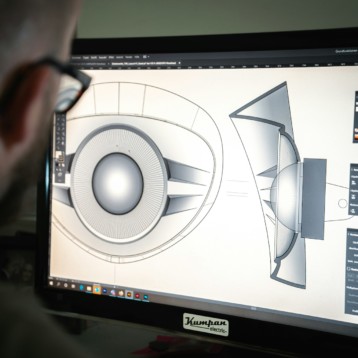|
Dai’s group made an important breakthrough when they succeeded in making graphene nanoribbons less than 10 nanometers wide. These thin graphene nanoribbons can operate at higher temperatures than previous grapheme chips.
As silicon chips shrink all the time (according to Moore’s Law, the number of transistors on a chip will double every two years), researchers predict that they will reach their maximum shrinking point within the next decade. This has prompted a search for materials to replace silicon, and graphene is one of the more popular materials being considered.
Researchers, including Dai himself, have expressed the opinion that graphene could supplement but not replace silicon, helping meet the demand for ever-smaller transistors and faster processing.
Additionally, researchers, including those in Dai’s own group, have shown that carbon nanotubes outperform silicon in speed by a factor of two. The problem is that not all of the tubes, which can have 1-nanometer diameters, are semiconducting, according to Dai. On the other hand, Dai’s team demonstrated that all of their narrow graphene nanoribbons made from their novel chemical technique are semiconductors. “This is why structure at the atomic scale – in this case, width and edges – matters,” he said.
TFOT recently covered IBM’s advanced graphite processor technology as well as graphene paper and a nano switch that may hint at future chips.
More about Dai‘s and his graphene transistors, can be found on the Stanford University website.












